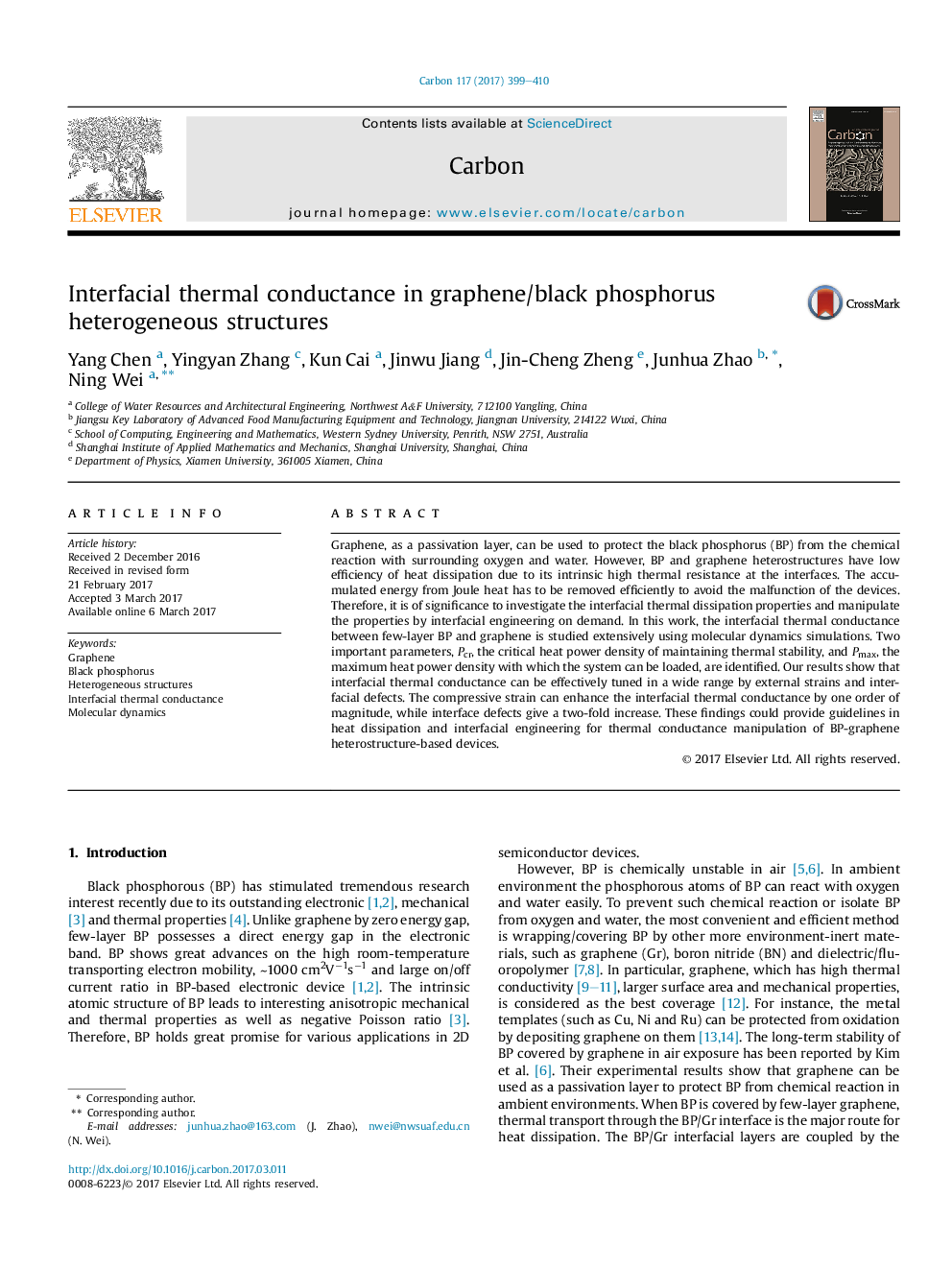| Article ID | Journal | Published Year | Pages | File Type |
|---|---|---|---|---|
| 5432380 | Carbon | 2017 | 12 Pages |
Graphene, as a passivation layer, can be used to protect the black phosphorus (BP) from the chemical reaction with surrounding oxygen and water. However, BP and graphene heterostructures have low efficiency of heat dissipation due to its intrinsic high thermal resistance at the interfaces. The accumulated energy from Joule heat has to be removed efficiently to avoid the malfunction of the devices. Therefore, it is of significance to investigate the interfacial thermal dissipation properties and manipulate the properties by interfacial engineering on demand. In this work, the interfacial thermal conductance between few-layer BP and graphene is studied extensively using molecular dynamics simulations. Two important parameters, Pcr, the critical heat power density of maintaining thermal stability, and Pmax, the maximum heat power density with which the system can be loaded, are identified. Our results show that interfacial thermal conductance can be effectively tuned in a wide range by external strains and interfacial defects. The compressive strain can enhance the interfacial thermal conductance by one order of magnitude, while interface defects give a two-fold increase. These findings could provide guidelines in heat dissipation and interfacial engineering for thermal conductance manipulation of BP-graphene heterostructure-based devices.
Graphical abstractDownload high-res image (556KB)Download full-size image
